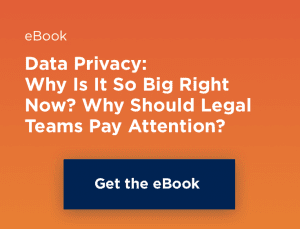A True TAP Use Case: Consumer Data Requests
Workflow automation can bring fast and effective solutions to the new regulations issued by recent and upcoming data privacy laws.
These regulations (like those in the California Consumer Protection Act) demand that consumers have the opportunity to make their own choices about how their data is managed. Failure to comply will result in a generous fee, and the fee grows with each infraction. One way for companies to answer the call to compliance? The Consumer Data Request Workflow.
The CCPA demands that consumers are able to take certain actions on their data from the company’s website. What are these Consumer Data Requests (also called “Verifiable Consumer Requests” in CCPA argot)?
Data Deletion:
- Consumers have the right to request that businesses delete the information that the business has collected from that consumer.
- What earns you the CCPA seal of approval? Creating two or more avenues for consumer requests, including a phone number and website.
Do Not Sell:
- Personal Information (PI) is no longer a free-for-all: consumers have the right to opt out of the sale of their PI to third parties.
- What earns you the seal of approval? Businesses must have a link on their webpage that identifies consumers and protects their PI, and these decisions must be respected for at least 12 months.
Disclosure:
- Consumers have the right to request the Personal Information that a company has collected.
- What earns you the seal of approval? Businesses must make two methods of request available to their consumers, including a web request and phone number.
Our Consumer Data Request workflow helps manage these fast-flying requests
The right tool can tackle each of these requirements of the CCPA without making you break a sweat – or break into cold sweats. A well-designed process, drafted using TAP Workflow Automation, can address every one of these requests.
Using smart, self-guiding online forms, consumers will be able to initiate their request without leaving the company website.
Everything stays on-brand while the form seamlessly gathers consumer inputs before being validated and then triaged to the right internal team for review and execution.
Any CCPA fine print is carefully designed into the workflow itself. Automated reminders keep your employees engaged in the workflow, while notifications keep your consumers apprised of the status of their requests.
How many businesses will be affected? The CCPA is expected to apply to more than 500,000 U.S. businesses, even those not physically located in California but collecting data on state residents.
Extensions are requested automatically from the workflow if it hits certain complexity requirements or certain dates draw near. Examples are whether a response is required after 45 days (in the case of the Disclosure Request workflow), or the annual reminder to a review his or her “Do Not Sell” request.
Did we mention the audit trail? Every workflow is complete with an audit trail that keeps employees accountable and businesses compliant with all regulations.
[bctt tweet=”The right workflow automation tool can tackle CCPA consumer data requests without making you break a sweat – or break into cold sweats. ” via=”no”]
Benefits driving quick adoption and airtight compliance
The features and benefits of workflow automation for Consumer Data Request workflows are where TAP really shines. Let’s go!
- Forms are branded to have the same look and feel as the company website for the best end-user experience.
- Intakes are submitted, processed, and screened with far greater speed and minimized errors, delays and costs.
- Ease of form design makes it simple to update the workflow, ensuring you’re as compliant as possible today and tomorrow, regardless of how laws evolve and change. Thanks, drag-and-drop UI!
- “Privacy By Design” ensures companies are compliant without need of additional management or manpower.
- Diverse teams can complete their due diligence workflows in parallel, and are also given opportunities for collaboration.
- Central dashboard provides superior monitoring and governance of all processes.
- Automatic centralized archiving of workflow data and assets provides for detailed record-keeping and review.
The CCPA and similar regulations mean that compliance officers can’t be complacent: we need to hit the ground running to ensure that all of the details are taken care of, and ensure that we have a flexible, agile technology that can adapt along with the evolving regulations.
These new regulations offer an opportunity to reconsider your company’s data governance model, and provide a ROI-and-compliance-backed “excuse” to invest in best-in-class software and completely transform the way your employees work. No longer searching for lost emails or pinging the same person for signature guarantees compliance, while also giving employees extra time to focus on the higher-level issues that the CCPA and other data privacy regulations bring to the forefront.




